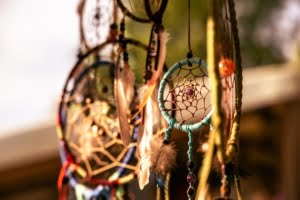 To continue our mental health series for populations that are not often talked about enough, we would like to discuss Native American mental health. I would like to acknowledge that this is a monumental task that will not be achieved in just one article; there are 574 federally recognized tribes in the United States, all of which have a distinct and unique culture and way of being. This article is meant to be more of a general overview of mental health trends that Native Americans may struggle with, and a guide for resources.
To continue our mental health series for populations that are not often talked about enough, we would like to discuss Native American mental health. I would like to acknowledge that this is a monumental task that will not be achieved in just one article; there are 574 federally recognized tribes in the United States, all of which have a distinct and unique culture and way of being. This article is meant to be more of a general overview of mental health trends that Native Americans may struggle with, and a guide for resources.
Let’s talk some numbers. According to Mental Health America 1.3% of the American population identifies as Native American or Alaskan Native. Of that 1.3%, 19% reported having a mental illness within the past year. That is over 827 thousand people, which is enough to fill every major league baseball stadium on the East coast twice. At the same time, mental health access for Native American populations is not great, and for various reasons. One of those reasons, and a strong one to boot, is poverty. Compared to the total U.S. population (14.7 percent), nearly twice as many Native/Indigenous people in America live in poverty (26.6 percent). In 2013, Native/Indigenous people were nearly twice as likely as whites to be unemployed. If you barely have the resources to feed yourself and pay your bills, mental health access is not going to be a priority for you.
Another “barrier” so to speak is a difference in understanding of mental health, and sometimes lack of education regarding mental health concerns. There are Native American communities that do not necessarily understand mental health and stigmatize it, but there are also Native tribes that just view it differently from a Western perspective. It may not be seen as a mental health concern, and may be explained with a wide range of other explanations. Similarly, another barrier to accessing more modern mental health care is that mental health symptoms may be expressed in ways that fit with Western ideas of what certain mental health categories look like; as opposed to mental and cognitive symptoms, some of the symptoms that this community may present with might be physical (for example, stomach aches, headaches, tension, etc.).
The mental health concerns that Native populations struggle with vary greatly, but one common trend is that Native and Indigenous people in America report experiencing serious psychological distress 2.5 times more than the general population, and lack of access to mental health resources only further exacerbates this. Suicide numbers are also greater among Native teens; the suicide rate is more than double that for White teens. Finally, another common mental health trend among several Native tribes is the presence of substance use (which unfortunately has become a harmful stereotype). It has been reported that Native and Indigenous people in America start to use and abuse alcohol and other drugs at younger ages, and at higher rates, than all other ethnic groups.
So how do we help? Really the initial step is probably to increase access to mental health services for Native and Indigenous communities. The following are some resources available for Native American populations.
The Indigenous Story Studio creates illustrations, posters, videos, and comic books that focus on health and social issues for youth.
This is the website for the American Indian/Alaska Native National Resource Center for Health, Education, and Research. Their mission is to improve prevention and treatment of mental health and substance use problems and services among Native people.
A Guide To Suicide Prevention for American Indian and Alaska Native Communities
Presentations & Publications related to Native and Indigenous Mental Health
A comprehensive health resource for Native youth by Native youth, promoting holistic health and positive growth in local communities and nation at large.
The StrongHearts Native Helpline (1-844-762-8483) is a confidential and anonymous culturally-appropriate domestic violence and dating violence helpline for Native Americans, available every day from 7 a.m. to 10 p.m. CT.
Tribal Health – Reaching out InVolves everyone (THRIVE)
Project committed to reducing suicide rates among American Indians and Alaska Natives.
NPAIHB – Two Spirit and LBGT Health
Centers for American Indian & Alaska Native Health
A final thought, as you enjoy your meals with your families, friends, and peers this week, please take a moment to remember the countless lives that were lost to colonization. The first step in assisting Native and Indigenous populations with their mental health is to acknowledge the suffering and trauma they have faced.
By, Marion White, LMHC
